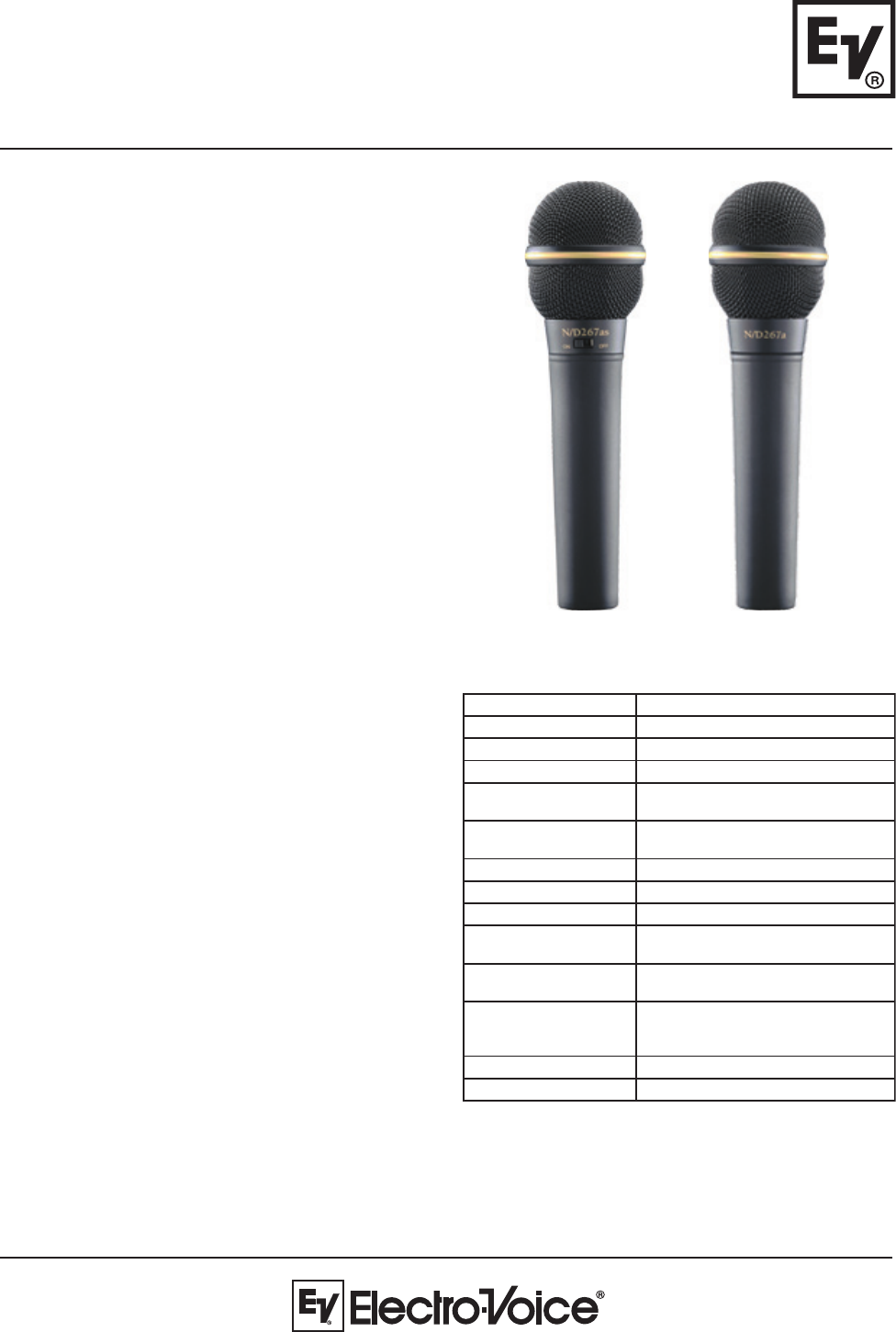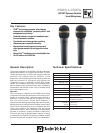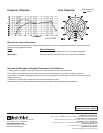
Technical Specifications:
:tnemelEerutcurtstengam®MYD/NcimanyD
:esolC,esnopseR.qerFzH000,51-zH54
:raF,esnopseR.qerFzH000,51-zH001
:nrettaPraloPdioidraC
tiucriCnepO,ytivitisneS
:zHk1@egatloV
lacsap/Vm9.2
:ytiraloPevitisophtiw3nip.fer,evitisop2niP
mgarhpaidnoerusserp
:ecnadepmI)z-wol(decnalabsmho006
:rotcennoCenohporciMepyt-RLX,nip-3
:hsiniFkcalbgnitcelfer-noN
:slairetaMneercsellirg™xelfarmeM
eldnah™pirGmraW
:dedulcnIseirosseccA)kcalB(retpadAdnatS
gaB"giG"dereppiZtfoS
:htgneL,snoisnemiD
:retemaiD
:knahS
)mm181("21.7
)mm25("50.2
)mm02("08.0
:thgieWteN)g832(zo4.8
:thgieWgnippihS)g515(zo2.81
General Description:
N/D267a & N/D267as
N/DYM
®
Dynamic Cardioid
Vocal Microphone
Key Features:
• VOB
TM
technology provides tailored bass
response for controlled “proximity effect” and
exceptional vocal clarity
• Cardioid pattern for superior feedback rejec-
tion and acoustic isolation
• Consistant sound over greater working
distances than competitive models
• Neodymium based magnet structure pro-
vides greater sensitivity and signal-to-noise
ratio
• Warm Grip
TM
handle for more comfortable feel
• On/Off switch on N/D267as
The acoustic response of the N/D267a and 267as presents
optimal performance in a live sound environment. The new
“vocally optimized bass” or VOB™ technology provides the
performer with reduced resonant distortion at low
frequencies. Critical damping of the low frequency resonant
peak has resulted in a microphone that replaces the
“muddiness” found in competitive models with greater
warmth and increased vocal clarity. The increased clarity
permits greater working distances than other competitive
microphones, and ensures a clean, clear, consistent sound
that “cuts through the mix.”
Operation
The low frequency response of the N/D267a and 267as
microphone varies with the distance from the sound source.
Known as “proximity effect,” maximum bass response is
produced in “close-up” use with the microphone 1/4 inch
from the sound source. Normal bass response is
experienced with working distances greater than 24 inches.
Working close to the microphone will produce a more robust
sound. Close up positioning of the microphone will also
reduce the potential for feedback from the sound
reinforcement system. When close-talked, the bass-boost
provides an increase in overall microphone output level.
The mixer gain may be proportionately reduced, resulting
in a reduction of the system’s sensitivity to feedback caused
by sound entering the microphone from the loudspeakers.




